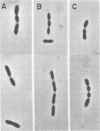Abstract
Fecal specimens from nine adults were examined for the presence of methanogenic bacteria. Enrichment cultures of five specimens produced methane in 5 days. Of these five specimens, three were tested and produced methane during a short-term incubation. Four specimens did not produce methane in either short-term incubation or in enrichment culture. Each methanogenic culture contained methanogens similar in morphology to organisms of the genus Methanobrevibacter and showed factor-420 fluorescence by fluorescence microscopy. Pure cultures were obtained from four of the five methanogenic enrichment cultures. Each isolate grew and formed methane from either H2-CO2 or formate, but growth obtained with formate was poor. None of the isolates used acetate, methanol, or trimethylamine. All isolates grew in the presence of bile salts. In immunological studies, each isolate was closely related to the type strain of Methanobrevibacter smithii, a finding consistent with the physiological and morphological similarities between the isolates and the type strain.
Full text
PDF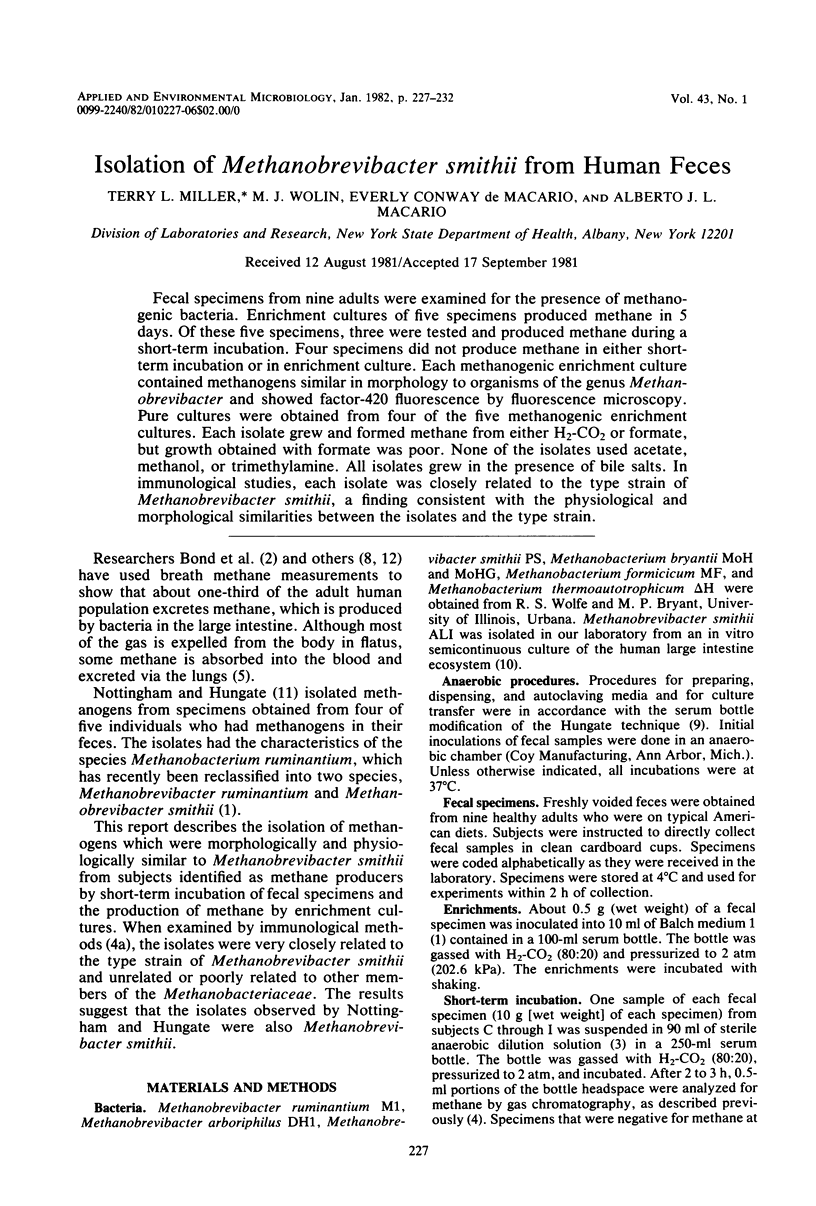
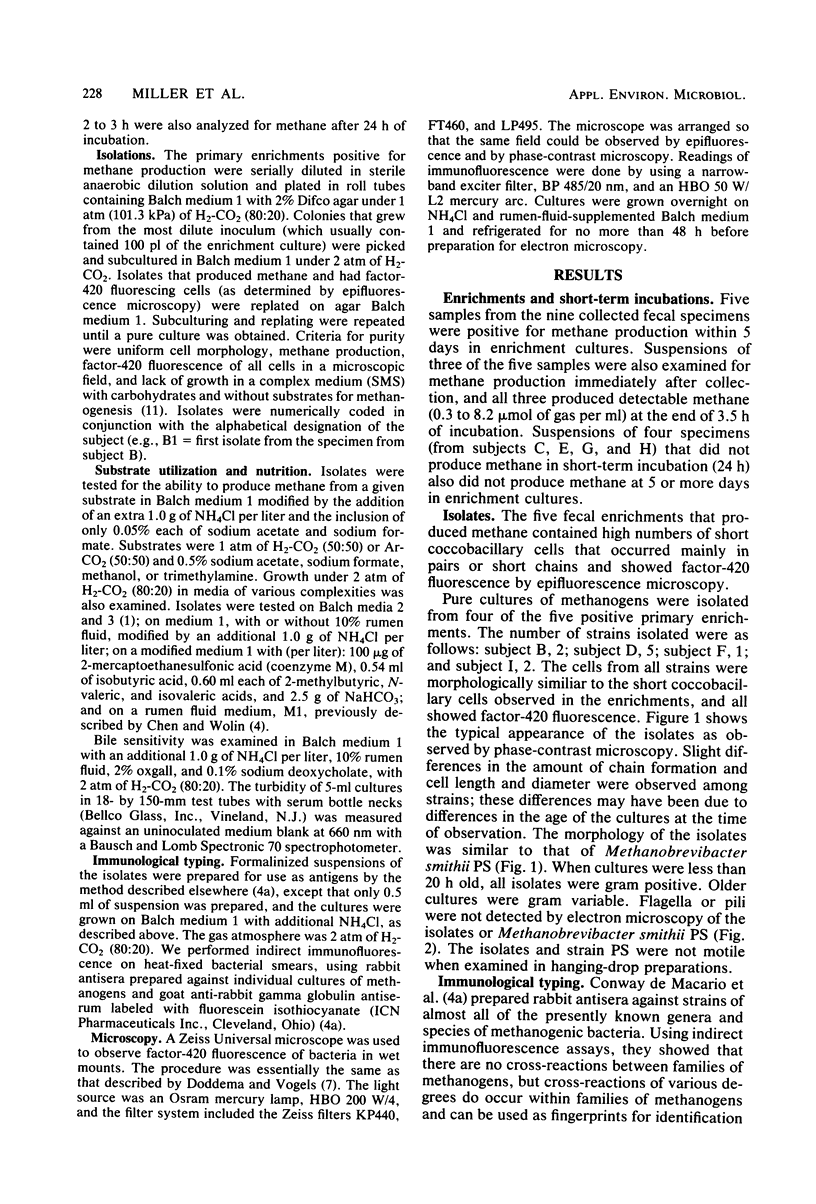
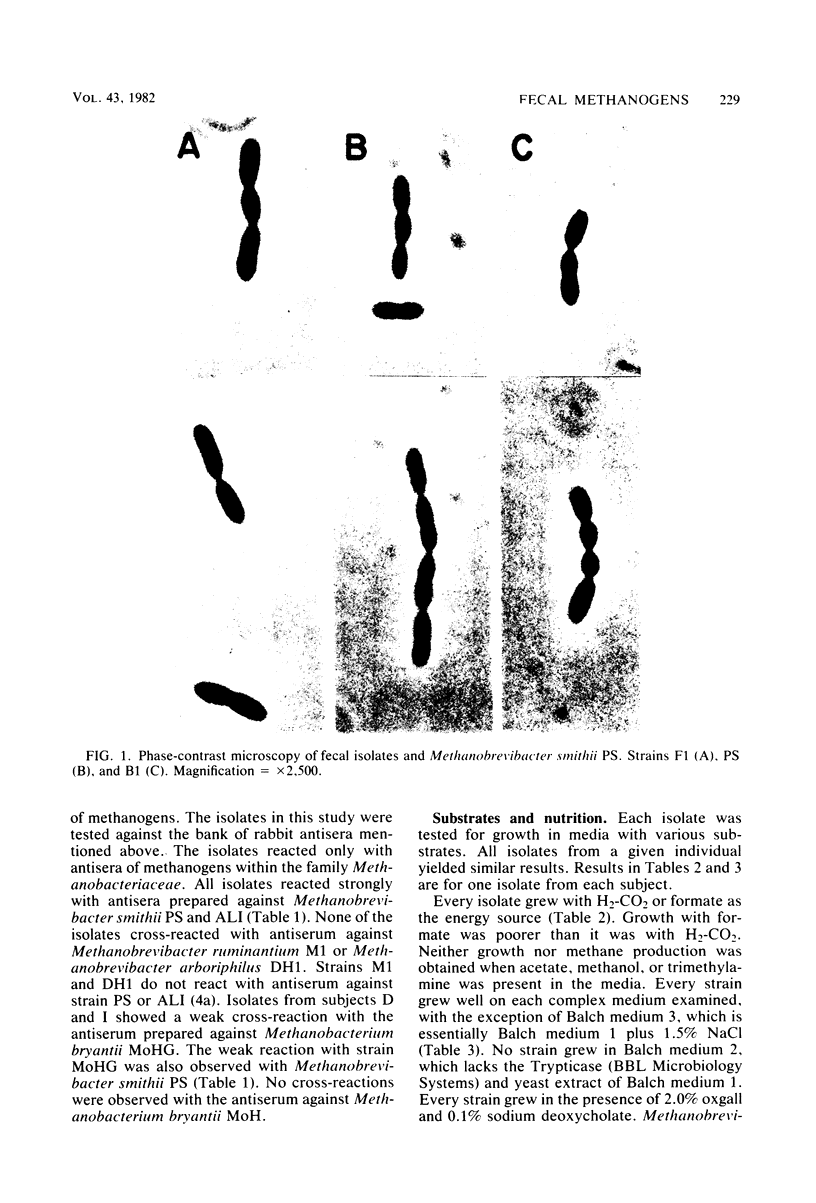
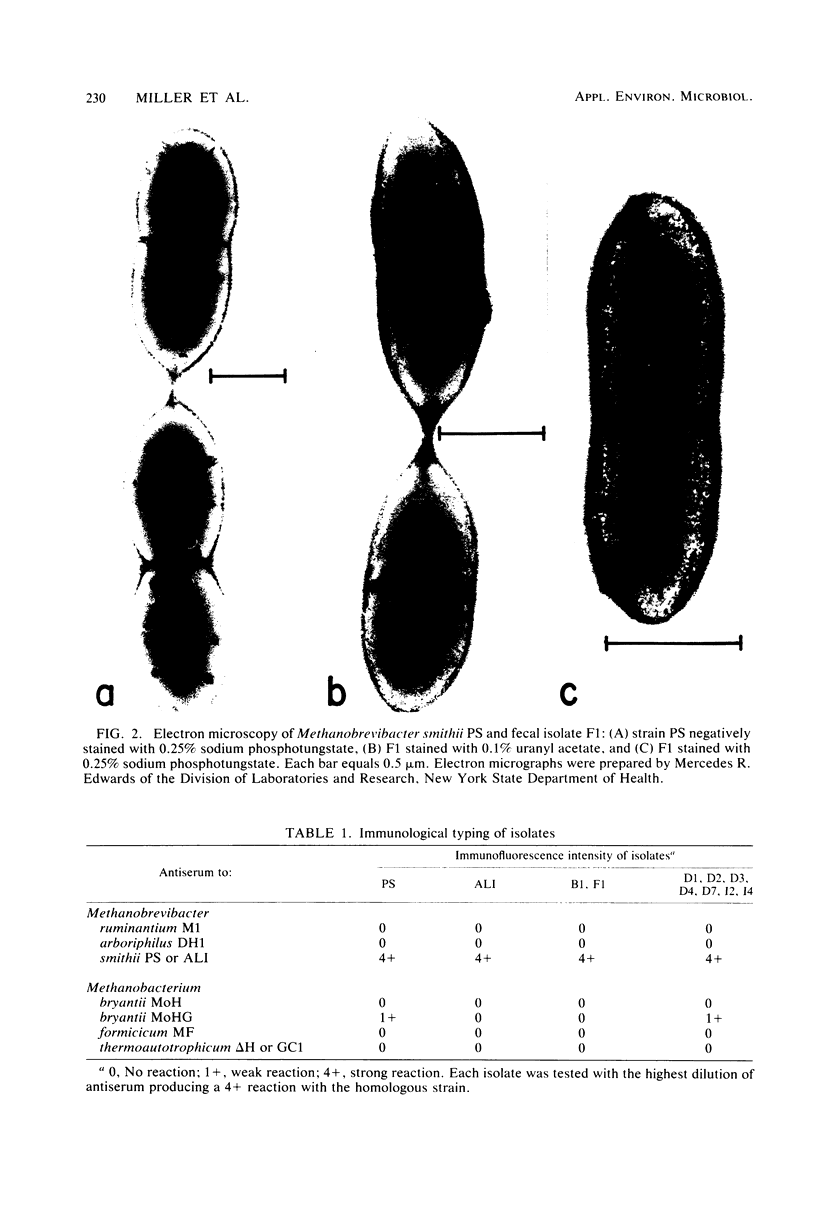
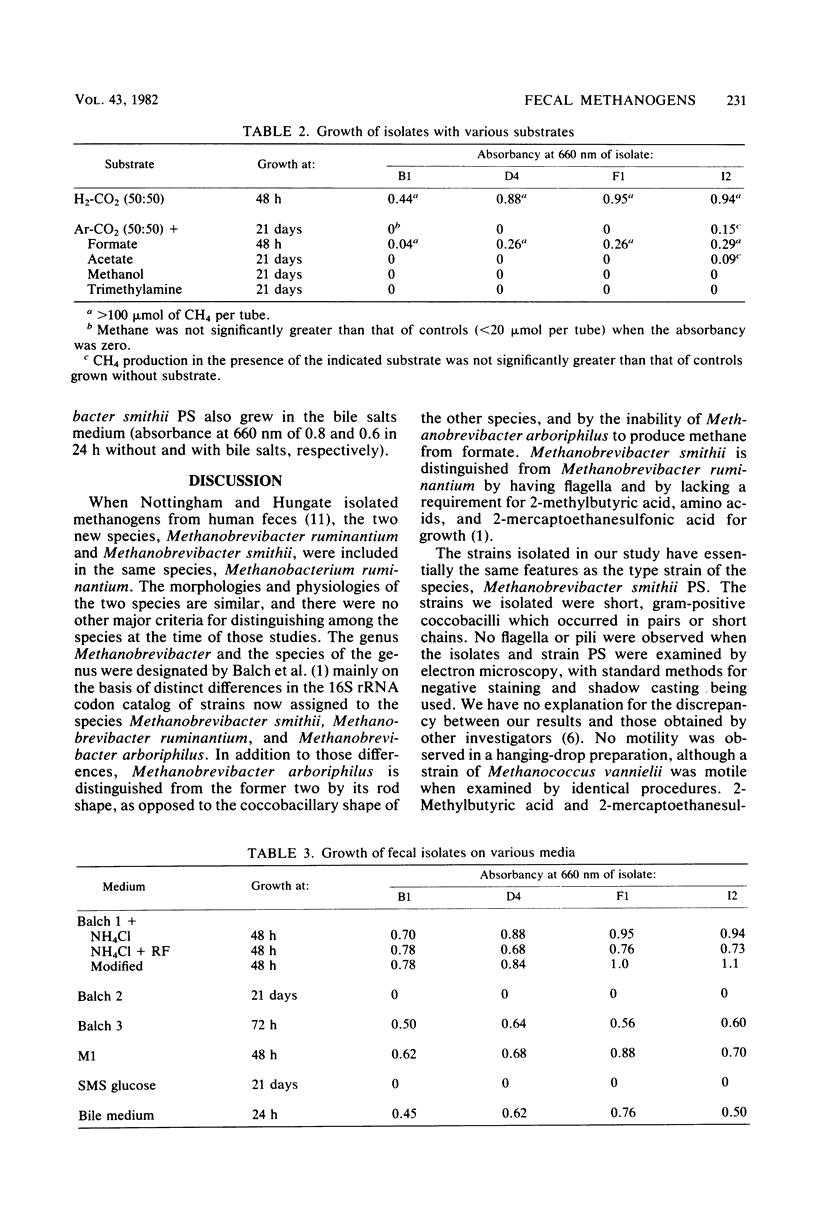
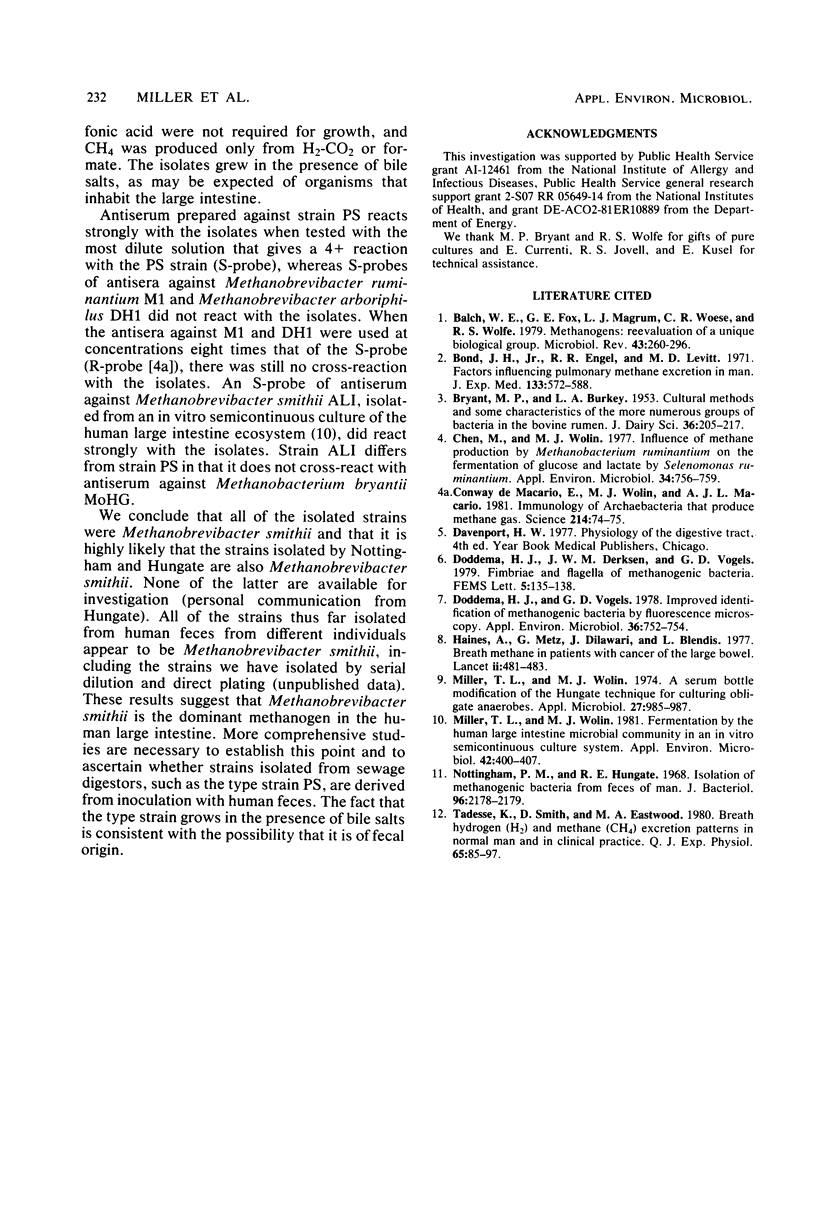
Images in this article
Selected References
These references are in PubMed. This may not be the complete list of references from this article.
- Balch W. E., Fox G. E., Magrum L. J., Woese C. R., Wolfe R. S. Methanogens: reevaluation of a unique biological group. Microbiol Rev. 1979 Jun;43(2):260–296. doi: 10.1128/mr.43.2.260-296.1979. [DOI] [PMC free article] [PubMed] [Google Scholar]
- Bond J. H., Jr, Engel R. R., Levitt M. D. Factors influencing pulmonary methane excretion in man. An indirect method of studying the in situ metabolism of the methane-producing colonic bacteria. J Exp Med. 1971 Mar 1;133(3):572–588. doi: 10.1084/jem.133.3.572. [DOI] [PMC free article] [PubMed] [Google Scholar]
- Chen M., Wolin M. J. Influence of CH4 production by Methanobacterium ruminantium on the fermentation of glucose and lactate by Selenomonas ruminantium. Appl Environ Microbiol. 1977 Dec;34(6):756–759. doi: 10.1128/aem.34.6.756-759.1977. [DOI] [PMC free article] [PubMed] [Google Scholar]
- Conway de Macario E., Wolin M. J., Macario A. J. Immunology of archaebacteria that produce methane gas. Science. 1981 Oct 2;214(4516):74–75. doi: 10.1126/science.6792708. [DOI] [PubMed] [Google Scholar]
- Doddema H. J., Vogels G. D. Improved identification of methanogenic bacteria by fluorescence microscopy. Appl Environ Microbiol. 1978 Nov;36(5):752–754. doi: 10.1128/aem.36.5.752-754.1978. [DOI] [PMC free article] [PubMed] [Google Scholar]
- Haines A., Metz G., Dilawari J., Blendis L., Wiggins H. Breath-methane in patients with cancer of the large bowel. Lancet. 1977 Sep 3;2(8036):481–483. doi: 10.1016/s0140-6736(77)91605-1. [DOI] [PubMed] [Google Scholar]
- Miller T. L., Wolin M. J. A serum bottle modification of the Hungate technique for cultivating obligate anaerobes. Appl Microbiol. 1974 May;27(5):985–987. doi: 10.1128/am.27.5.985-987.1974. [DOI] [PMC free article] [PubMed] [Google Scholar]
- Miller T. L., Wolin M. J. Fermentation by the human large intestine microbial community in an in vitro semicontinuous culture system. Appl Environ Microbiol. 1981 Sep;42(3):400–407. doi: 10.1128/aem.42.3.400-407.1981. [DOI] [PMC free article] [PubMed] [Google Scholar]
- Nottingham P. M., Hungate R. E. Isolation of methanogenic bacteria from feces of man. J Bacteriol. 1968 Dec;96(6):2178–2179. doi: 10.1128/jb.96.6.2178-2179.1968. [DOI] [PMC free article] [PubMed] [Google Scholar]
- Tadesse K., Smith D., Eastwod M. A. Breath hydrogen (H2) and methane (CH4) excretion patterns in normal man and in clinical practice. Q J Exp Physiol Cogn Med Sci. 1980 Apr;65(2):85–97. doi: 10.1113/expphysiol.1980.sp002502. [DOI] [PubMed] [Google Scholar]



